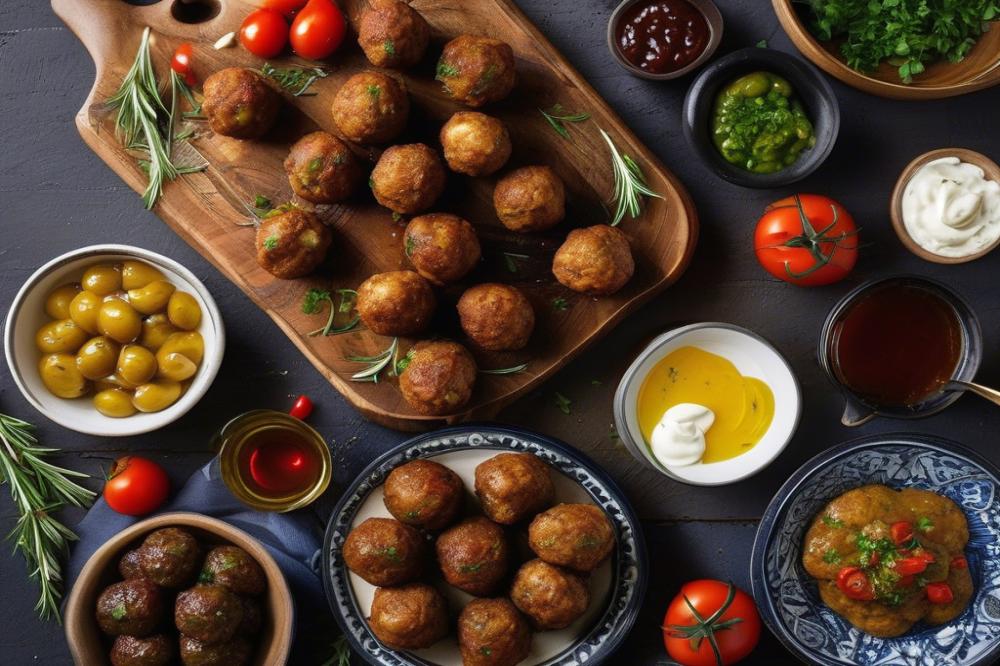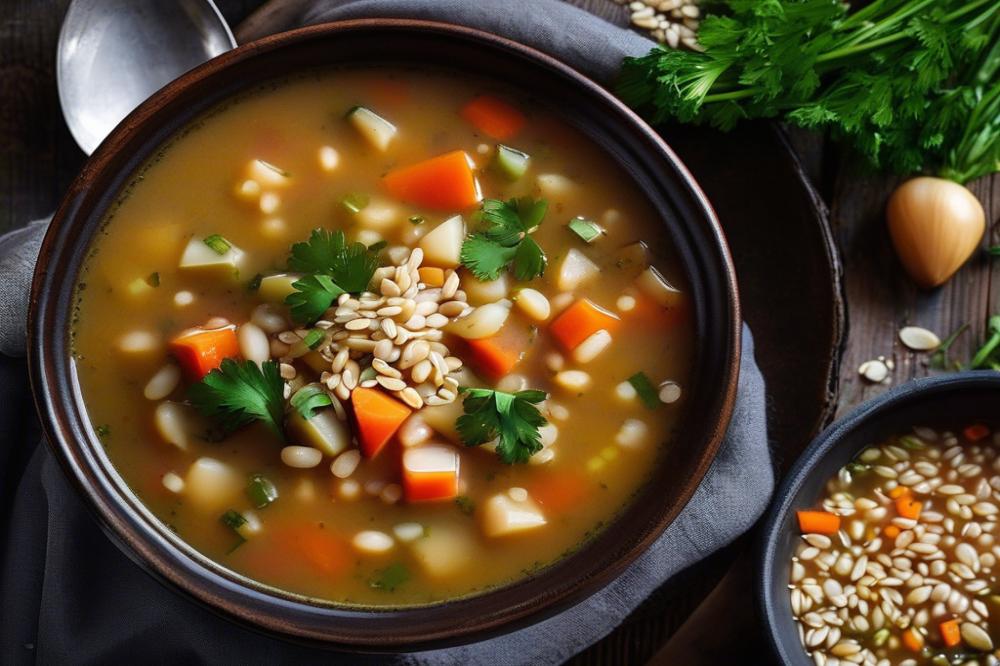Introduction
Greek cuisine is rich and diverse, showcasing flavors and ingredients that reflect the country’s history and geography. From vibrant vegetables to succulent meats, the food is a harmonious blend of the Mediterranean diet. The dishes are often seasoned with fresh herbs and spices, which create a delightful burst of taste in every bite.
Keftedes, a beloved dish in Greece, are traditional recipebix.com/how-to-make-traditional-greek-eggplant-dip-melitzanosalata”>meatballs that hold a special place in the hearts and homes of many. Families have passed down recipes for generations, highlighting their importance in Greek culture. These meatballs often appear at festive gatherings and casual meals alike. They symbolize warmth, hospitality, and the joy of sharing food with loved ones.
This easy recipe for Greek Keftedes will guide you through making these flavorful morsels. Expect a blend of minced meat combined with aromatic herbs and spices, creating a delightful mix that delights the taste buds. Whether you choose to bake them for a healthier option or fry for a crispy exterior, this dish caters to different cooking preferences. Dive into this culinary adventure, and you’ll discover why these meatballs are a favorite among many.
Greek Keftedes: The Perfect Blend of Flavors
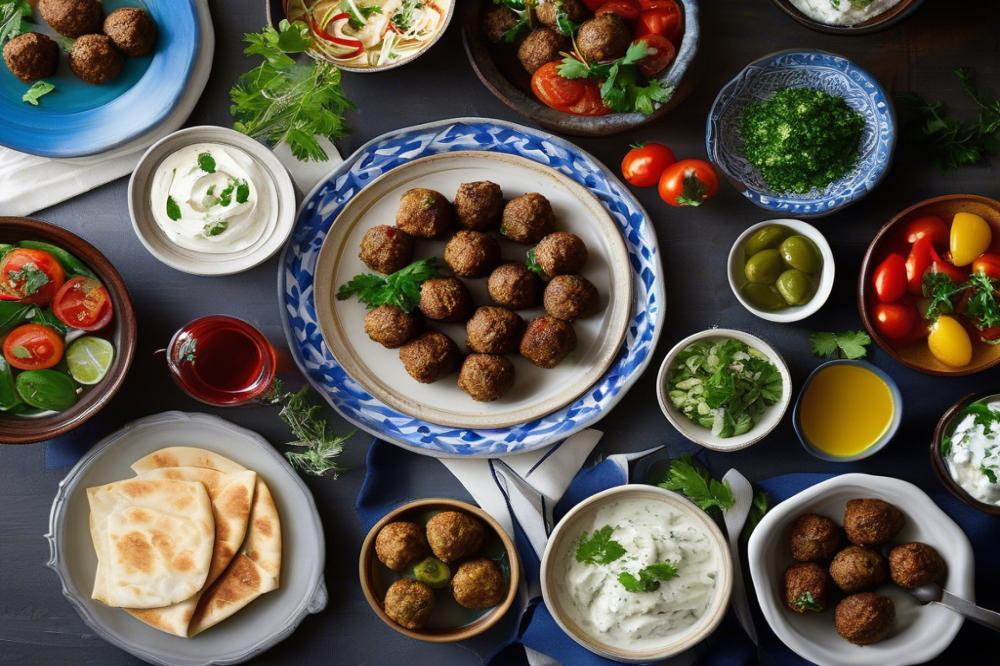
Keftedes are small, flavorful meatballs that hold a special place in Greek cuisine. These delightful morsels showcase a blend of spices and herbs, creating an irresistible taste. Traditionally, they are served with a side of tzatziki sauce, which complements the savory meat perfectly. Often found at family gatherings or festive occasions, they bring people together around the dinner table.
When it comes to minced meat, there are a variety of options to choose from. Ground beef is popular for its rich flavor, while lamb adds a unique twist with its tender texture. A mix of both can create a perfect balance, giving the meatballs a depth of taste. Each choice contributes to the overall flavor profile, allowing for personalization in this easy recipe.
Key Herbs and Spices
A few key herbs and spices make these meatballs truly shine. Oregano is a staple in Mediterranean cooking. It brings a fresh and earthy taste, enhancing the other ingredients. Dill and parsley add brightness, while a hint of cinnamon warms the flavor. Garlic and onion are also must-haves. These aromatics deepen the overall essence of the dish.
Fresh ingredients elevate the quality of the dish. Using high-quality herbs and spices ensures that the flavors pop. Fresh minced meat should be sourced whenever possible for the best results. When all elements are fresh, the dish becomes a celebration of authentic Greek cooking. Opting for vibrant vegetables for side dishes can round out the meal beautifully.
Cooking methods vary but offer exciting options. Keftedes can be fried in olive oil for a crispy texture. Baking them in the oven is an easier method that still produces delicious results. Both techniques allow for that desirable golden exterior while keeping the interior moist and flavorful. Whatever method you choose, the heart of these meatballs remains the same: a perfect blend of flavors that highlight the essence of Greek tradition.
Ingredients List and Cooking Instructions
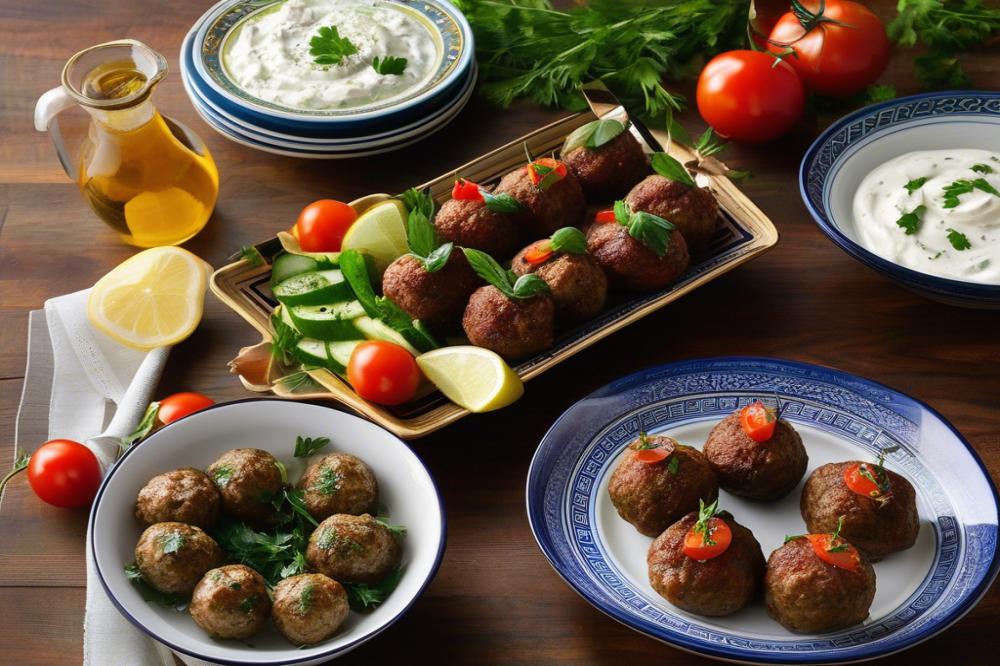
Ingredients
- 500g minced meat (beef or lamb)
- 1 cup breadcrumbs
- 1 onion, finely chopped
- 2 cloves garlic, minced
- 1/4 cup fresh parsley, chopped
- 1 tsp dried oregano
- 1 tsp ground cinnamon
- Salt and pepper to taste
- 1 egg
- Olive oil for frying or drizzling for baking
Cooking Instructions
Start by preparing all the ingredients. Finely chop the onion and mince the garlic cloves. Fresh parsley should be washed, dried, and chopped. Gather your minced meat of choice: beef or lamb will work well.
In a large mixing bowl, combine the minced meat, breadcrumbs, chopped onion, garlic, parsley, oregano, and ground cinnamon. Add the egg to this mixture. Season generously with salt and pepper. Using your hands, mix everything thoroughly until the mixture is well combined. This is where the flavors of herbs and spices will come together, making the meatballs delicious.
Next, form the mixture into small balls, about the size of a golf ball. This can be a fun activity. Keep your hands slightly wet to prevent sticking. You can also choose to make them larger or smaller based on your preference.
Now, you can decide how to cook them. For frying, heat a generous amount of olive oil in a pan over medium heat. Fry the meatballs until they are golden brown on all sides. This usually takes about 5-7 minutes. If you prefer baking, preheat your oven to 180°C (350°F). Place the meatballs on a baking sheet and drizzle olive oil on top. Bake them for around 25-30 minutes, or until fully cooked.
For serving, place your meatballs on a platter. They pair well with a side of tzatziki, a refreshing yogurt sauce. Adding a Greek salad or some pita bread is a nice complement and enhances the Mediterranean experience. Enjoy your traditional Greek cuisine creation with family and friends!
Nutritional Information
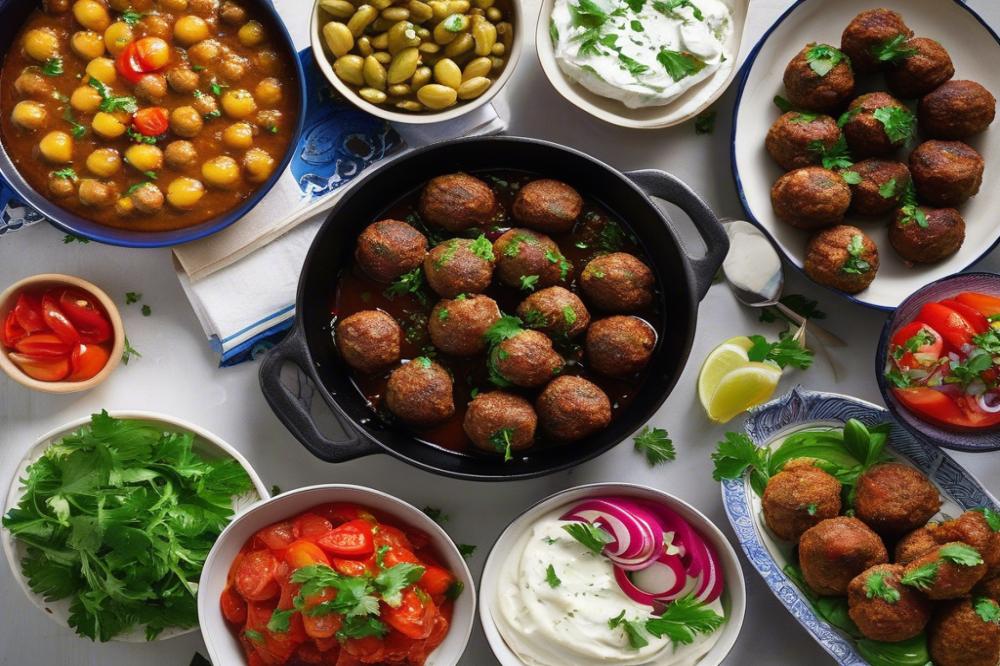
Breakdown of Calories and Macronutrients
The ingredients for Greek Keftedes contribute various amounts of calories and nutrients. Typically, one serving contains about 200-250 calories. This varies depending on cooking methods and portion sizes. Minced meat, often beef or lamb, provides protein and essential fats. For instance, ground beef has around 20 grams of protein and 15 grams of fat per 100 grams.
Herbs and spices, such as oregano and garlic, add minimal calories but offer beneficial nutrients. Sliced onion and crushed garlic are typically included. They provide flavor along with fiber and vitamins. In one cup of mixed greens, you might only add 25 calories but pack a nutritional punch. When combined, these ingredients create a balanced dish notable in Greek cuisine.
Health Benefits of Ingredients
Using lean minced meat can keep fat content lower while still providing necessary protein. Garlic, for example, is known for its heart health advantages. It can help decrease cholesterol levels and improve blood circulation. Fresh parsley, often used in this recipe, is rich in vitamins A, C, and K. This herb supports immunity and good bone health.
Spices like cumin and cinnamon possess antioxidant properties. They help combat oxidative stress within the body. While enjoying Keftedes, you also gain antioxidants and other health benefits from these ingredients. The combination creates a wonderful dish that not only tastes good but is also good for you.
Comparison of Nutritional Values: Frying vs. Baking
Frying Keftedes in oil can significantly change the nutritional profile. Deep-frying increases the calorie count per serving due to added fat from the oil. Choosing to fry can add up to 100 or more calories per serving depending on the method used. Baking, on the other hand, reduces the oil content, providing a healthier option.
With baking, you retain the delicious flavors while keeping the fat content lower. Each method offers a unique texture and taste, but health-conscious individuals often favor baking. Fat content for baked meatballs usually ranges from 10-15 grams, compared to fried varieties that can reach 25 grams or higher. This factor encourages people to consider their choices, balancing flavors with health.
Tips for Perfect Greek Keftedes
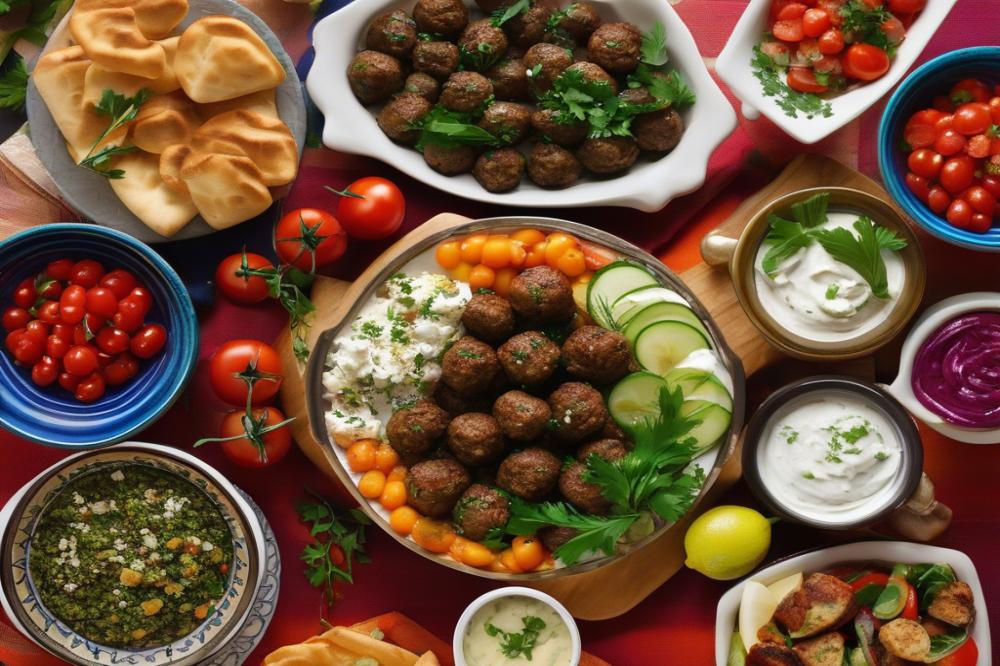
Common Mistakes to Avoid When Making Keftedes
Mixing too many ingredients can lead to a confusing flavor. Use the right balance of herbs and spices for authentic taste. Overworking the minced meat creates dense meatballs, making them less enjoyable. Instead, mix gently to keep them tender. Another common mistake is frying at too high a temperature. This can brown the outside too quickly while leaving the inside raw. Aim for a medium heat to cook things evenly. Don’t forget to let the meatballs rest before serving; this helps keep them juicy.
Suggestions for Variations
Using different types of meat gives the dish a fresh twist. Ground beef or lamb are traditional choices, but ground turkey or chicken can work well too. For those wanting a vegetarian option, chickpeas or lentils can make delicious meatballs. Combining grated vegetables like zucchini or carrots can add moisture and flavor. Exploring different herbs, such as mint or dill, can also create a unique spin on this Mediterranean dish.
Ideas for Side Dishes and Sauces that Complement Keftedes
Serving these meatballs alongside a Greek salad provides a refreshing contrast. A side of tzatziki sauce, made with yogurt, cucumber, and garlic, enhances the flavor. Alternatively, roasted vegetables bring a satisfying element to the meal. You might consider pairing with pita bread for a complete experience. For a heartier option, pilaf or rice can balance out the meal perfectly. Dipping the meatballs in a homemade tomato sauce can elevate them further. Each of these sides offers its own charm and complements the traditional recipe well.
Cultural Significance of Keftedes
Keftedes hold a special place in Greek culture. These flavorful meatballs often appear during celebrations and are a staple at family gatherings. Many Greeks serve them during religious holidays, family reunions, or casual weekend meals. These savory bites create a sense of connection, bringing people together around the dinner table.
Family traditions regarding keftedes vary widely. In many households, a beloved recipe is passed down through generations, often tweaked by each cook. Grandmothers take pride in their unique methods, using a mix of minced meat, herbs, and spices crafted to their tastes. Everyone in the family might have their secret ingredient that makes their version unique.
Regional Variations
Different regions in Greece showcase their own variations of this beloved dish. In some areas, cooks might use lamb as the base for their keftedes. Others prefer using beef or pork, showcasing regional preferences. Along the islands, you might find recipes that include local herbs and spices, adding a fresh Mediterranean twist.
Baking is another method sometimes chosen over frying. This healthier option still captures a delicious flavor while making the dish easier to prepare. Simple ingredients highlight the originality of Greek cuisine, showing how locals embrace seasonal offerings. Each combination reflects the local culture and environment.
Regardless of the variation, keftedes embody warmth and comfort. They remind many of home and family gatherings. Whether enjoyed during a feast or a simple meal, these meatballs carry a richness that resonates with people. Each bite tells a story, uniting the past with the present in an easy recipe that anyone can love.
Final Thoughts on Keftedes
Keftedes hold a special place in Greek cuisine. These delightful meatballs not only showcase the rich flavors of the Mediterranean but also represent the heart of Greek hospitality. Families have their own styles, mixing ingredients passed down through generations. This is why each bite of these meatballs can transport you straight to a cozy taverna in Greece.
Trying your hand at making this recipe is a rewarding experience. It allows you to connect with this beloved dish. The process of mixing the meat with herbs and spices is an art form. You might discover that your kitchen can echo the warmth of a bustling Greek household. Plus, serving homemade meatballs to friends and family will surely impress them.
Greek cuisine is vast and filled with wonderful dishes. Once you master Keftedes, consider diving deeper into other classic meals. You could explore moussaka, spanakopita, or even a traditional Greek salad. Each dish has its own story and charm, waiting to be uncovered. So, gather your ingredients and start cooking—your journey into Greek flavors has just begun!

